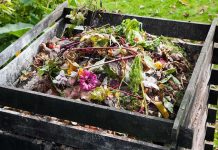
China has slammed the door on India’s specialty fertilizer imports, and the fallout is about to land squarely on the wallets of Indian farmers—and, make no mistake, the average consumer—while the so-called globalists in charge seem content to let a communist regime hold the keys to our food security.
At a Glance
- China abruptly halted all specialty fertilizer exports to India, using procedural tricks instead of an official ban.
- Indian farmers face immediate shortages and rising prices, with importers forced to seek expensive alternatives from Russia, Europe, and West Asia.
- The disruption exposes decades of failed self-reliance policies and overdependence on a strategic rival for critical agricultural inputs.
- Industry leaders warn of crop yield risks and rising consumer food prices if the crisis drags on.
China’s Shadow Ban Drops the Hammer on Indian Agriculture
China, the world’s unapologetic master of non-tariff warfare, has once again shown how to weaponize bureaucracy. In the last two months, Chinese authorities have quietly but effectively blocked all specialty fertilizer shipments to India by refusing to inspect them—no official ban, just a cold, procedural stonewall. This is not a minor hiccup. For years, China supplied a staggering 80% of India’s specialty fertilizers, particularly Mono-Ammonium Phosphate (MAP) and Calcium Nitrate (CN), which are crucial for high-value fruit and vegetable farming. Now, those shipments have plunged from over 223,000 metric tons in 2023 to a mere 49,000 by mid-2025. If you think that’s a coincidence, remember: China continues exporting these same products to other countries, targeting India with surgical precision.
China’s strategy is as simple as it is ruthless: maintain the appearance of open trade while using “procedural delays” to squeeze a rival. The Indian government, meanwhile, is left doing its best impression of a deer in headlights—scrambling for alternatives and mulling over policies to boost domestic manufacturing, all while the damage piles up.
Who Gets Hit Hardest? Farmers, Consumers, and the Myth of Global Interdependence
Let’s be crystal clear: the immediate victims are India’s horticulture farmers, who depend on specialty fertilizers for the kinds of crops that actually keep food inflation in check and rural incomes alive. With China’s supply cut off, Indian importers are now forced to buy from Europe, Russia, and West Asia—at far higher prices. These aren’t luxury goods; these are the inputs that decide whether crops thrive or fail. Higher fertilizer prices mean higher production costs, which means those price hikes are coming soon to a grocery store near you. So much for global supply chains making life easier for the little guy.
And what about the Indian government’s grand plans for food security? When the chips are down, they’re exposed as empty slogans. India’s domestic specialty fertilizer production is nowhere near ready to step in, hobbled by years of technological backwardness and lack of investment. And while a few domestic producers might enjoy less competition in the short run, they simply can’t scale up fast enough to avoid a crunch.
A Geopolitical Power Play—And Yet Another Wake-Up Call
Make no mistake, this is about more than fertilizer. China’s specialty fertilizer chokehold follows its restrictions on rare earth magnets and other strategic materials. It’s a pattern: use surreptitious trade barriers to punish rival nations while keeping plausible deniability. India’s government, for its part, has tried to push back with stricter investment rules and some diplomatic grumbling, but the reality is their hands are tied. When you let a hostile regime dominate your supply chains, you end up dancing to their tune. It’s the same story playing out across countless industries, and it should be a giant, flashing warning sign for every nation that values sovereignty—something the leftist globalists in charge seem determined to ignore.
Industry leaders, like Rajib Chakraborty from the Soluble Fertilizer Industry Association, are sounding the alarm, calling this the worst supply disruption in years. Analysts agree: while alternative suppliers can fill some of the gap, prices are rising, and the threat of reduced yields and shrinking farmer incomes is real. Some optimists claim this could spur long-overdue investment in domestic production. Maybe, but don’t hold your breath—decades of complacency are hard to undo overnight.














